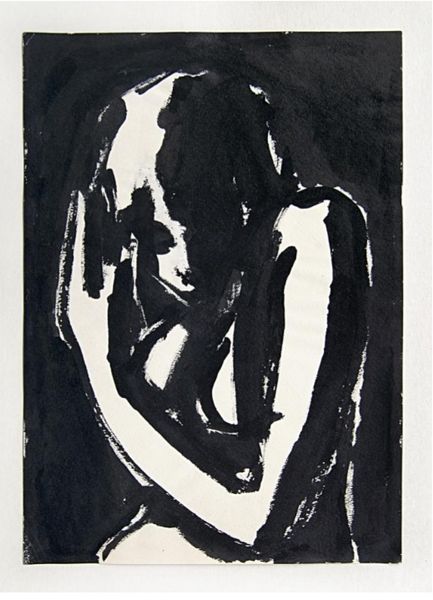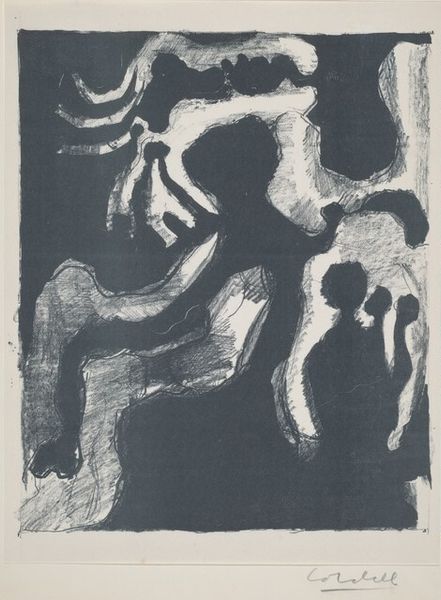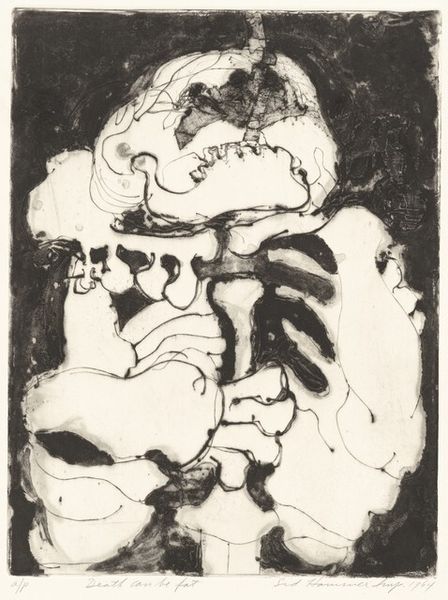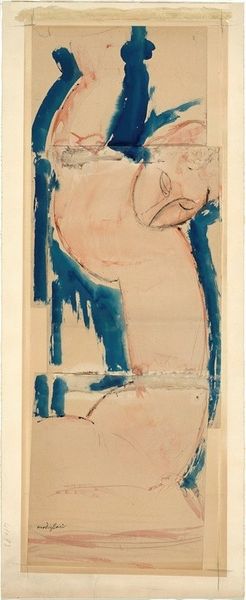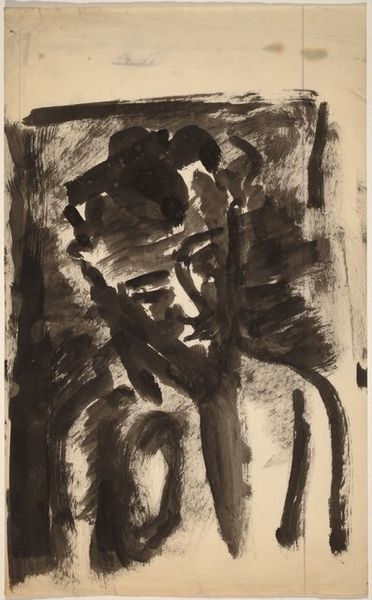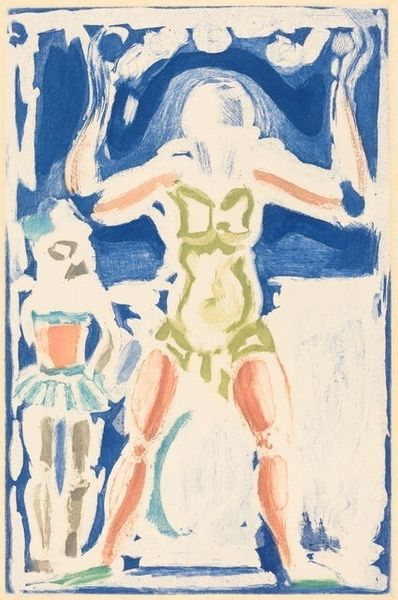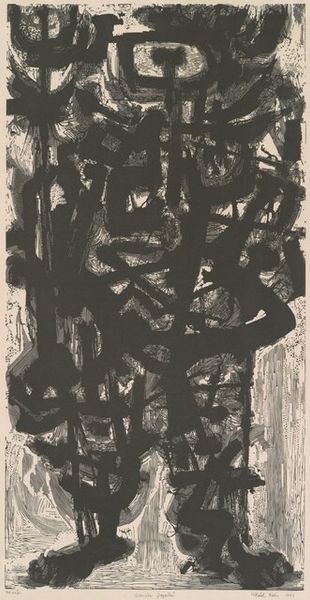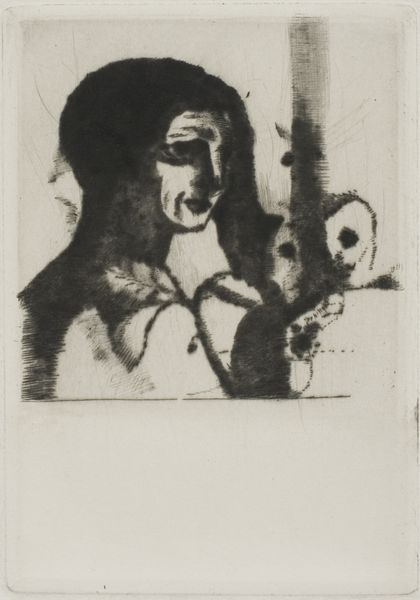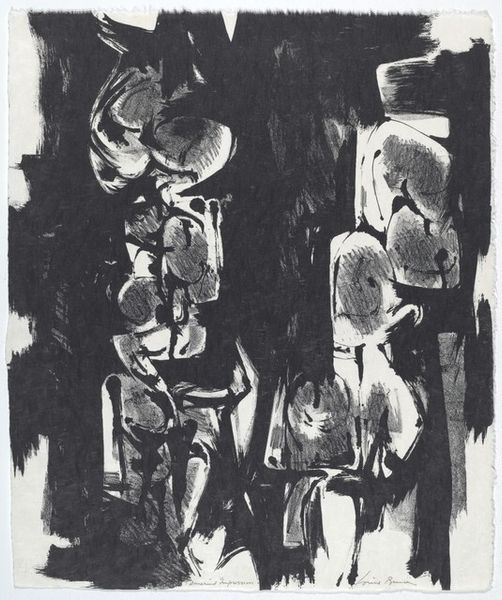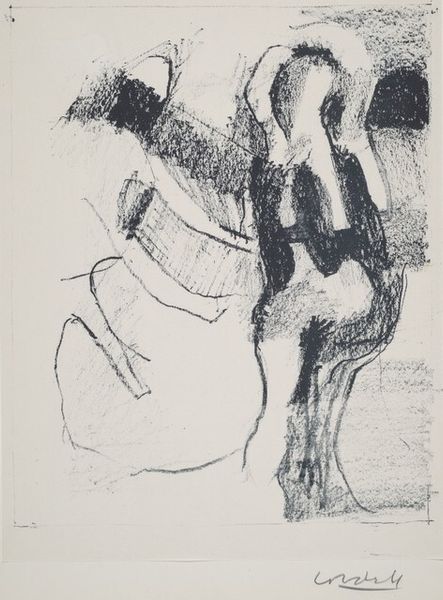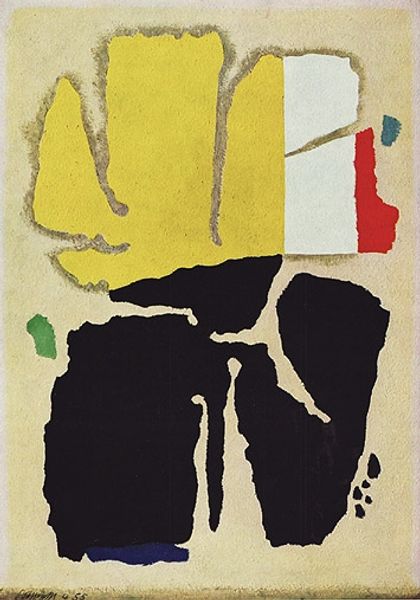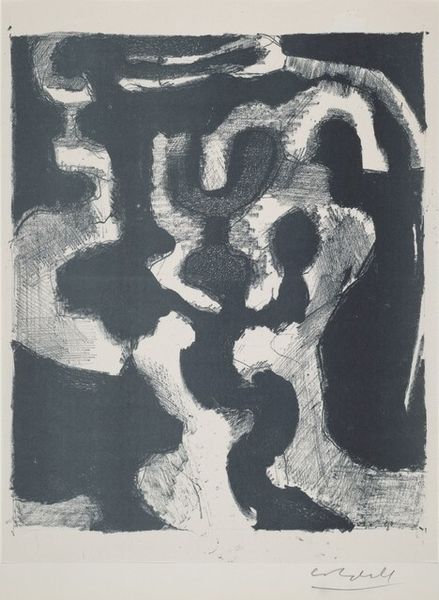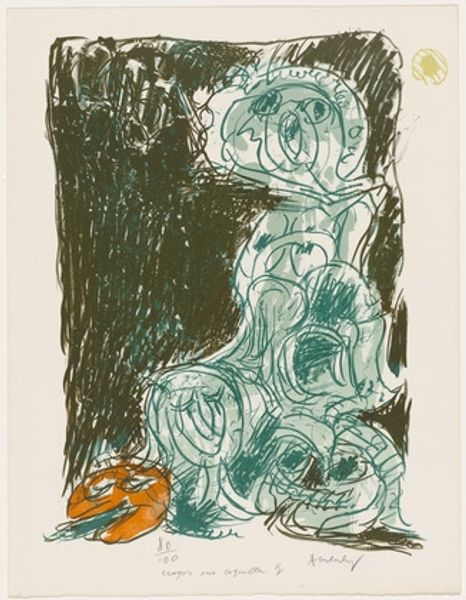
Copyright: National Gallery of Art: CC0 1.0
Curator: Georges Rouault's "Master Arthur," created in 1934, strikes me as simultaneously gentle and unsettling. It appears to be rendered primarily in watercolor and ink. What do you make of it initially? Editor: It's strangely ethereal. Almost ghostlike. The muted blues and grays, with hints of darker greens, give it a sense of melancholy, a quiet sadness. I'm curious about Rouault's use of color here. Curator: The palette is indeed restrained. Rouault was deeply influenced by his early apprenticeship as a stained-glass artist. It's hard not to think of those heavy outlines, almost leading, that defined much of his career. This piece reflects how that training shaped his engagement with portraying those marginalized in French society. Editor: Absolutely, one sees echoes of that influence. Was "Master Arthur" a real person? I'm compelled to consider the child's socio-economic standing at the time of this work and in connection to its history of reception. How did people view it then, versus how might someone engage with it now given contemporary conversations surrounding class, childhood and portraiture? Curator: Rouault rarely created direct portraits of the wealthy. "Master Arthur", just like many of his subjects, comes from the margins, which connects his work to larger discussions regarding representation and agency. Looking at this boy through our lens forces reflections on how systems of power influence representation itself, in art and more broadly. Editor: That contextualization is key. By emphasizing this child, perhaps Rouault critiques societal norms of the 1930s? And it is the child’s humanity which makes this critique, a portrait painted not to valorize but to give witness. I find it incredible how, even with such minimal brushstrokes, such a range of sentiment seems to emerge. Curator: His background profoundly shaped his social conscience. In Rouault’s work, what some perceived as crudeness, others understood to signal raw empathy. Editor: It does provoke introspection, a confrontation with privilege perhaps. Thank you, your insight made this painting's resonance far more palpable to me. Curator: The pleasure was all mine. Engaging with art through intersectional narratives definitely enhances our understanding, I think.
Comments
No comments
Be the first to comment and join the conversation on the ultimate creative platform.
